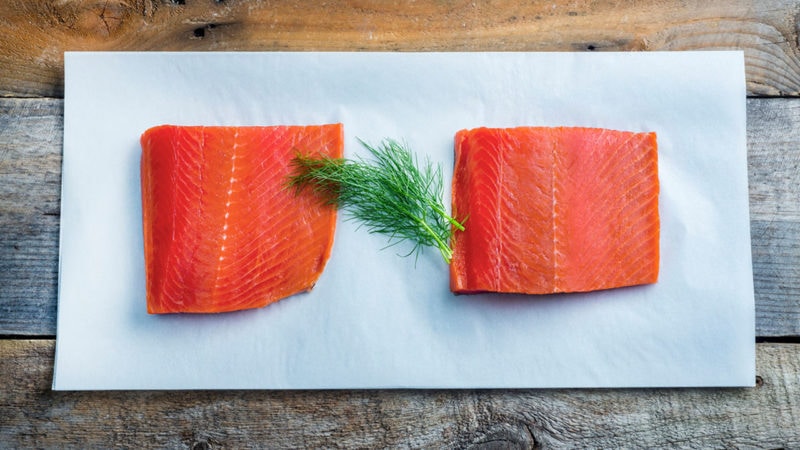Last Updated on January 27, 2025
As an important source of protein and other key nutrients, there’s no wonder why seafood is the star of many popular diets, meal prep recipes, and more.
When it comes to seafood, we can’t get enough wild-caught Alaskan sockeye salmon.
One reason is that it is a low-mercury fish with high Omega-3 content; Consumer Reports, for instance, includes wild and Alaskan salmon on its list of great choices for healthier seafood. Another reason is that it’s delicious and easy to use in all kinds of ways—that means you can make good food choices for your healthier lifestyle and your taste buds won’t get bored.
Let’s take a closer look at what wild-caught Alaskan sockeye salmon can bring to your plate.
Omega-3 Fatty Acids
According to the 2015–2020 Dietary Guidelines for Americans, Omega-3 (n-3) fatty acids as well as EPA and DHA (long chain n-3 fatty acids) are found in seafood. Fish like salmon can be one of the best and easiest ways to get your fill of these heart-healthy fats. For the general population, the guidelines recommend about 8 ounces per week of a variety of seafood. Salmon provides both EPA and DHA, important for heart and brain health.
The omega-3 fatty acids are polyunsaturated fatty acids and have been widely studied in the Mediterranean diet. Per recommendations made by the AHA/American College of Cardiology (ACC), fish should be consumed twice per week in cases of known cardiovascular disease. Beyond cardiovascular benefits, consuming fish as part of a Mediterranean diet has been shown to reduce breast cancer, depression, colorectal cancer, diabetes, obesity, asthma, erectile dysfunction, and cognitive decline, as reported in the American Journal of Medicine.
B Vitamins
Wild salmon is a source of various types of B vitamins that help the body turn food into energy, reduce inflammation that’s associated with heart disease, and more.
Vitamin D
Vitamin D is essential for healthy bones and teeth, and it can help to protect us from various diseases. Lots of people in the U.S. and across the world aren’t getting the amount of vitamin D they really need, so paying attention to your food choices is very important. Numerous sites list salmon (especially the wild variety) as one of the top foods highest in vitamin D, including the USDA. A 4-ounce serving of wild salmon provides nearly a full day’s requirement of vitamin D, making it one of the few foods that can make that claim. You can find out just how much Vitamin D is in salmon by using the USDA’s FoodData Central tool.
Selenium
While the average diet only requires trace amounts of selenium, it still plays an important role in the body when it comes to bone health and more. A study from the Institute of Food, Nutrition and Human Health at Massey University found that blood levels of selenium were higher in people who ate two servings of salmon per week when compared to people who took fish oil capsules containing less selenium.
Flavor and Versatility
As previously mentioned, the benefits of wild-caught salmon also include its great taste and extreme versatility. Bristol Bay Sockeye salmon has a unique, rich flavor, firm texture, and bright red color that makes it stand out from other types of salmon you might come across at the grocery store. In addition, there are so many ways you can incorporate salmon into your weekly meal plan. From searing to baking to poaching, our favorite salmon recipes have you covered.
Wild-caught Alaskan sockeye salmon can be an easy way to bring more benefits to your plate, especially when it’s frozen in single portions and delivered directly to your door. At ButcherBox, we focus on making high-quality protein more convenient for everyone.
Danielle Sirk is the Senior Copywriter at ButcherBox with a background in storytelling and food marketing. She believes in the power of meal prepping, poetry, running, and the great outdoors.



